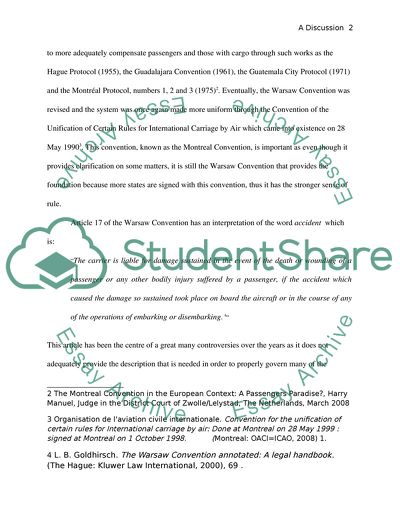Cite this document
(Warsaw Convention in the ourt Systems Article Example | Topics and Well Written Essays - 2500 words, n.d.)
Warsaw Convention in the ourt Systems Article Example | Topics and Well Written Essays - 2500 words. Retrieved from https://studentshare.org/law/1739701-in-the-context-of-aviation-insurance-critically-analyse-how-the-courts-in-both-the-united-states-of-america-and-england-have-interpreted-the-term-accident-under-article-17-of-the-warsaw-convention
Warsaw Convention in the ourt Systems Article Example | Topics and Well Written Essays - 2500 words. Retrieved from https://studentshare.org/law/1739701-in-the-context-of-aviation-insurance-critically-analyse-how-the-courts-in-both-the-united-states-of-america-and-england-have-interpreted-the-term-accident-under-article-17-of-the-warsaw-convention
(Warsaw Convention in the Ourt Systems Article Example | Topics and Well Written Essays - 2500 Words)
Warsaw Convention in the Ourt Systems Article Example | Topics and Well Written Essays - 2500 Words. https://studentshare.org/law/1739701-in-the-context-of-aviation-insurance-critically-analyse-how-the-courts-in-both-the-united-states-of-america-and-england-have-interpreted-the-term-accident-under-article-17-of-the-warsaw-convention.
Warsaw Convention in the Ourt Systems Article Example | Topics and Well Written Essays - 2500 Words. https://studentshare.org/law/1739701-in-the-context-of-aviation-insurance-critically-analyse-how-the-courts-in-both-the-united-states-of-america-and-england-have-interpreted-the-term-accident-under-article-17-of-the-warsaw-convention.
“Warsaw Convention in the Ourt Systems Article Example | Topics and Well Written Essays - 2500 Words”, n.d. https://studentshare.org/law/1739701-in-the-context-of-aviation-insurance-critically-analyse-how-the-courts-in-both-the-united-states-of-america-and-england-have-interpreted-the-term-accident-under-article-17-of-the-warsaw-convention.


